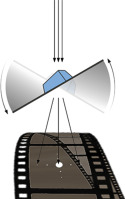Current Opinion in Colloid & Interface Science ( IF 8.9 ) Pub Date : 2018-01-31 , DOI: 10.1016/j.cocis.2018.01.010 Michael W Martynowycz 1 , Tamir Gonen 1, 2

|
Electron crystallography is widespread in material science applications, but for biological samples its use has been restricted to a handful of examples where two-dimensional (2D) crystals or helical samples were studied either by electron diffraction and/or imaging. Electron crystallography in cryoEM, was developed in the mid-1970s and used to solve the structure of several membrane proteins and some soluble proteins. In 2013, a new method for cryoEM was unveiled and named Micro-crystal Electron Diffraction, or MicroED, which is essentially three-dimensional (3D) electron crystallography of microscopic crystals. This method uses truly 3D crystals, that are about a billion times smaller than those typically used for X-ray crystallography, for electron diffraction studies. There are several important differences and some similarities between electron crystallography of 2D crystals and MicroED. In this review, we describe the development of these techniques, their similarities and differences, and offer our opinion of future directions in both fields.
中文翻译:

从 2D 晶体的电子晶体学到 3D 晶体的 MicroED
电子晶体学在材料科学应用中很普遍,但对于生物样品,它的使用仅限于通过电子衍射和/或成像研究二维 (2D) 晶体或螺旋样品的少数例子。cryoEM 中的电子晶体学是在 20 世纪 70 年代中期开发的,用于解析多种膜蛋白和一些可溶性蛋白的结构。2013 年,一种名为微晶电子衍射或 MicroED 的 cryoEM 新方法问世,它本质上是微观晶体的三维 (3D) 电子晶体学。这种方法使用真正的 3D 晶体,比通常用于 X 射线晶体学的晶体小十亿倍,用于电子衍射研究。2D 晶体的电子晶体学和 MicroED 之间有几个重要的区别和一些相似之处。在这篇综述中,我们描述了这些技术的发展、它们的异同,并对这两个领域的未来发展方向提出了我们的看法。



























 京公网安备 11010802027423号
京公网安备 11010802027423号